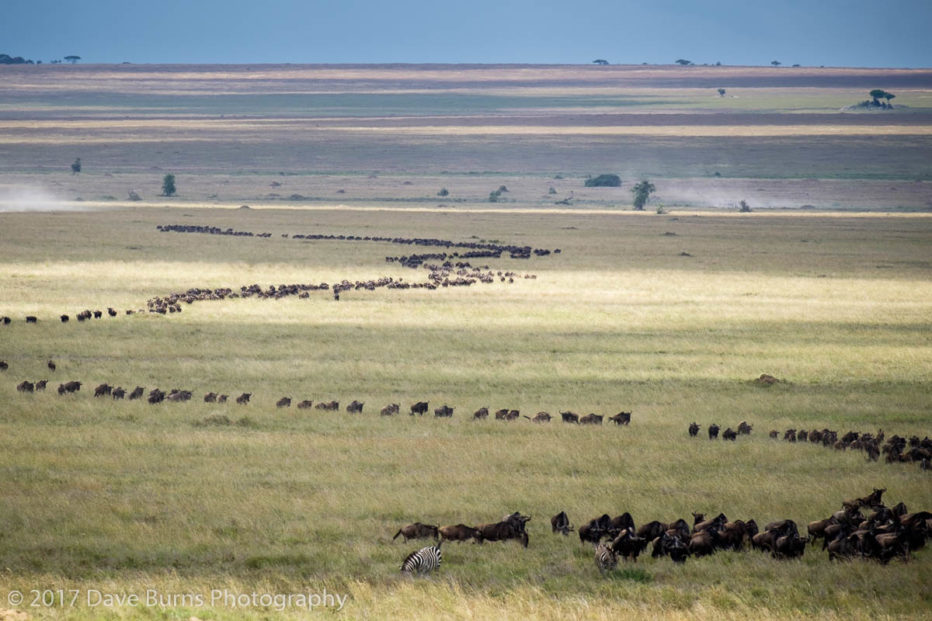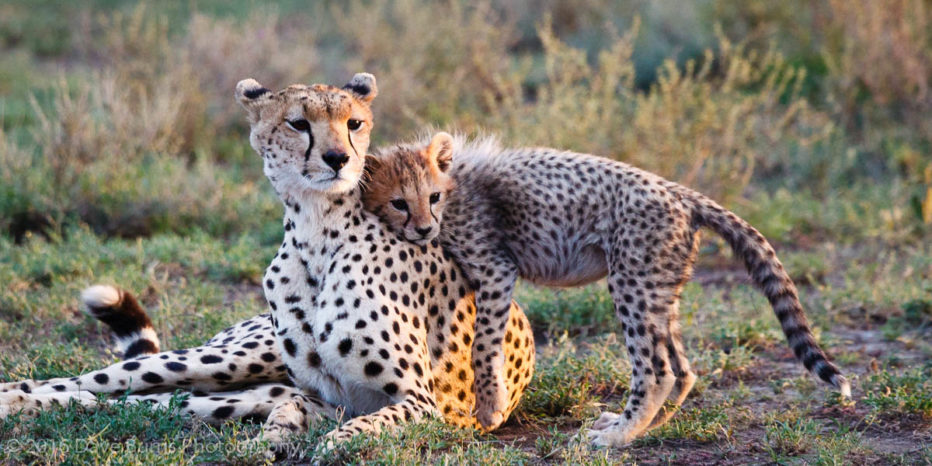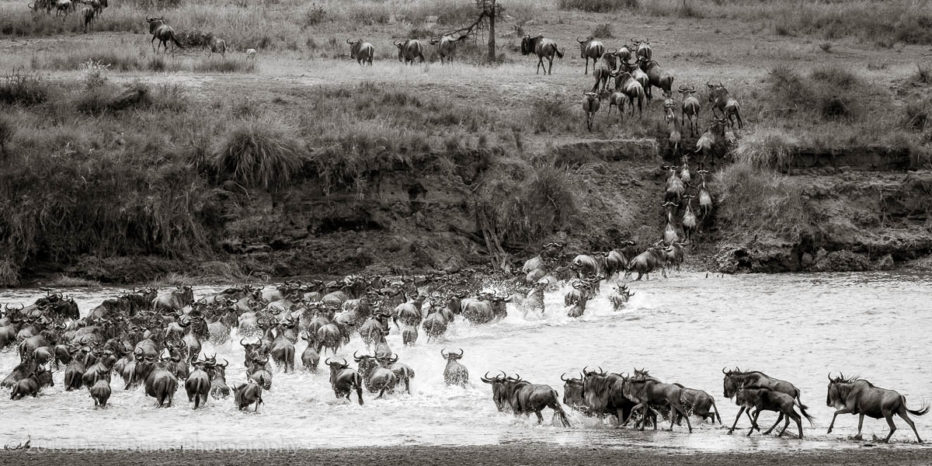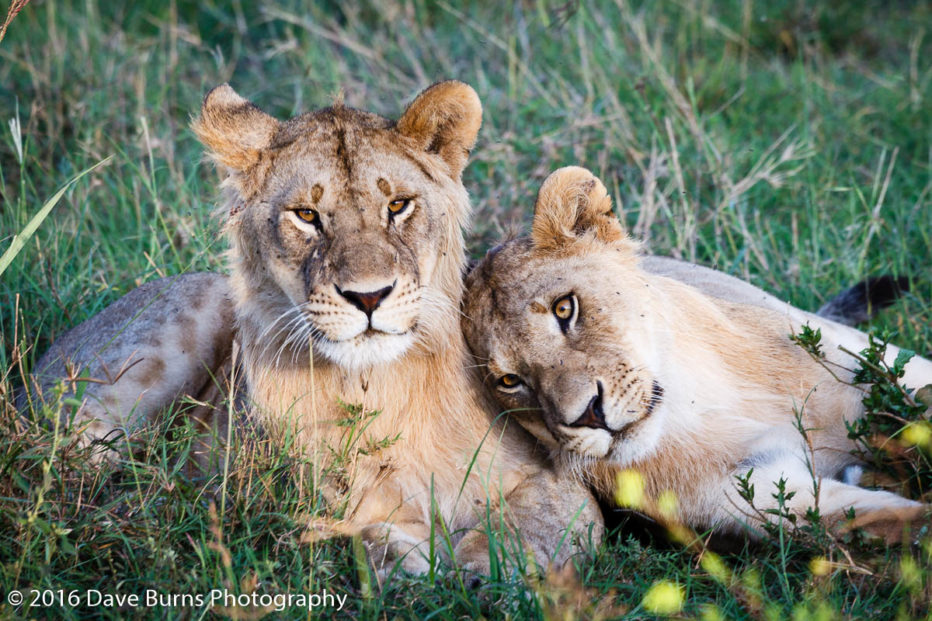Since I schedule safaris at different times during the year, one of the questions I’m frequently asked is, which time of year is best to go?
Honestly, there’s no bad time to go but things will be different depending on when you choose: sometimes there are greener landscapes, sometimes cooler temperatures, etc. Here is more detail:
What about the migration?

Clients always ask about the migration herds of wildebeest. It’s a myth that you need to go at a certain time of year to see the migration. It happens year-round and it’s likely you’ll see it on most safaris. There are certain times of year when the migrating herds cross crocodile-infested rivers like in the spectacular videos by National Geographic or this one I took in July 2017. Those you’ll need to plan for by, for example, coming in July.
One question I always ask people is, do you even need to see the migration herds? Some people think wildebeest are not the most photogenic creatures and, although it can be nice to get a picture of a 20,000-strong herd stretching out to the horizon, keep in mind that cats are territorial. If you would rather see things like big or small cats, they stay put even if the herds have left an area. In fact, they may be more likely to come out into the open if prey is scarce.
When reading the below thoughts, keep in mind that the Ngorongoro Crater, where I go on all of my Tanzanian safaris, is good at any time of year.
My February safari:
In February, Tarangire is always very lush after the “short rains” of November/December. The wildlife spreads out and thick vegetation gives photographs beautiful green backgrounds. Still, there are plenty of elephants to see and the baobabs are in bloom.
At the same time, the short-grass plains in the southern Serengeti and Ndutu areas are green and the migration herds of zebra and wildebeest move into the area to graze with their newborn foals and calves. Young prey is always attractive to predators so we keep our eyes peeled!
I usually end my February safari in the mid-Serengeti since the cats and the kopjes they typically inhabit are photogenic at any time.

My July safari:
I recommend my July safari for people who don’t handle heat well. This is Tanzania’s winter and even though Tanzania is at the equator, the temperatures are still the coolest of the year. You’ll need a sweater or light jacket at night.
In Tarangire, the park becomes more active after the “long rains” in April and May and then it gradually dries out until the short rains begin again in November. Seeing it in July strikes a nice sweet spot to see concentrations of wildlife but with some green as well.
After May, the short-grass plains in the southern Serengeti start drying out and the migrating herds move north to the center. The rate they move all depends on whether there are more intermittent showers and how they affect grass growth. For my July safari, I begin the Serengeti in its center where the concentration of herds, kopjes, and big cats make for great viewing.
By that time of year, the herds may be far enough into the northern Serengeti that it is the best time to attempt to see a river crossing. I end there with a couple of days but I always warn people that the wildebeest and the weather aren’t on schedules so, even though I’ve been successful in the past, there are no guarantees.

My October safari:
I think October is the best time of year for Tarangire National Park. Things have dried out so that wildlife congregates down by the Tarangire River which is the only remaining water source (and the predators know this!). Since it’s dry, it’s a better time to see wildlife in thickets and bushes since they’re less foliated.
The Serengeti portion of the safari starts in the central Serengeti around the photogenic kopjes and plains. We may see the tail end of the migration herds here along with big cats and some lesser known species. We then finish with a few days in the rolling hills of the northern Serengeti which is at its best at this time: plenty of herds to see and some bird and antelope species which occur nowhere else on the trip.

I hope the thoughts above help you to pick the right safari for you. If you have any questions I didn’t answer, please feel free to leave a comment below or send me an email.
Safari njema!
db
About Dave Burns
Dave Burns is a wildlife, travel, and landscape photographer whose passions range from the beauty of the African savanna to the streets of Paris. He created Dave Burns Photo Tours to share his favorite places with other photographers, help them capture unique images, and learn more about photography and digital work flow. His next trip is an African photo safari to the Serengeti in February 2021. Dave’s images are in private collections and galleries. To contact him, use the contact page on this site.